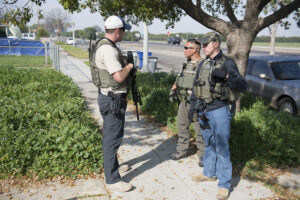If you have a permit for concealed carry of a firearm, it’s important that you choose carefully when dressing for the day. Your personal build, clothing, weapon, and carry system all must work together to achieve this end.
The Problem
Maintaining concealment has both legal and tactical implications. For civilians it’s usually a must, as few businesses tolerate open carry even in jurisdictions where it’s legal. Even law enforcement officers, who may carry in any manner they choose, generally maintain concealment except when in uniform. Open carry requires high tactical awareness, as you become the first target in any active shooting situation. Uniformed officers train extensively and use special holsters to avoid having a bad guy grab their gun when on duty.
The Solution
It’s not enough to put on a holster and a jacket and call it a day. Pocket holsters, in-waistband (IWB) holsters, and regular external holsters all have their issues. Thin fabrics and tailored fit make printing an issue with pocket carry, and you may need to go up a waistband size for IWB carry. External holsters are convenient and fast, but if you frequently reach up or around you may lose concealment. Men who wear suits often find that a concealed shoulder holster is the best option for avoiding this issue, but you still need to be realistic. Suit and sport coats should be fitted with concealed carry in mind where possible, and avoid being too tight (which can cause bulges and printing) or loose (which can expose the firearm due to gaping lapels). Where concealment must be complete, a smaller firearm may be in order.
You must generally balance the perceived need for firepower with the consequences if concealment is broken. It’s also important to realize that you may not be able to dress like everyone else if you are carrying a firearm.






Be First to Comment